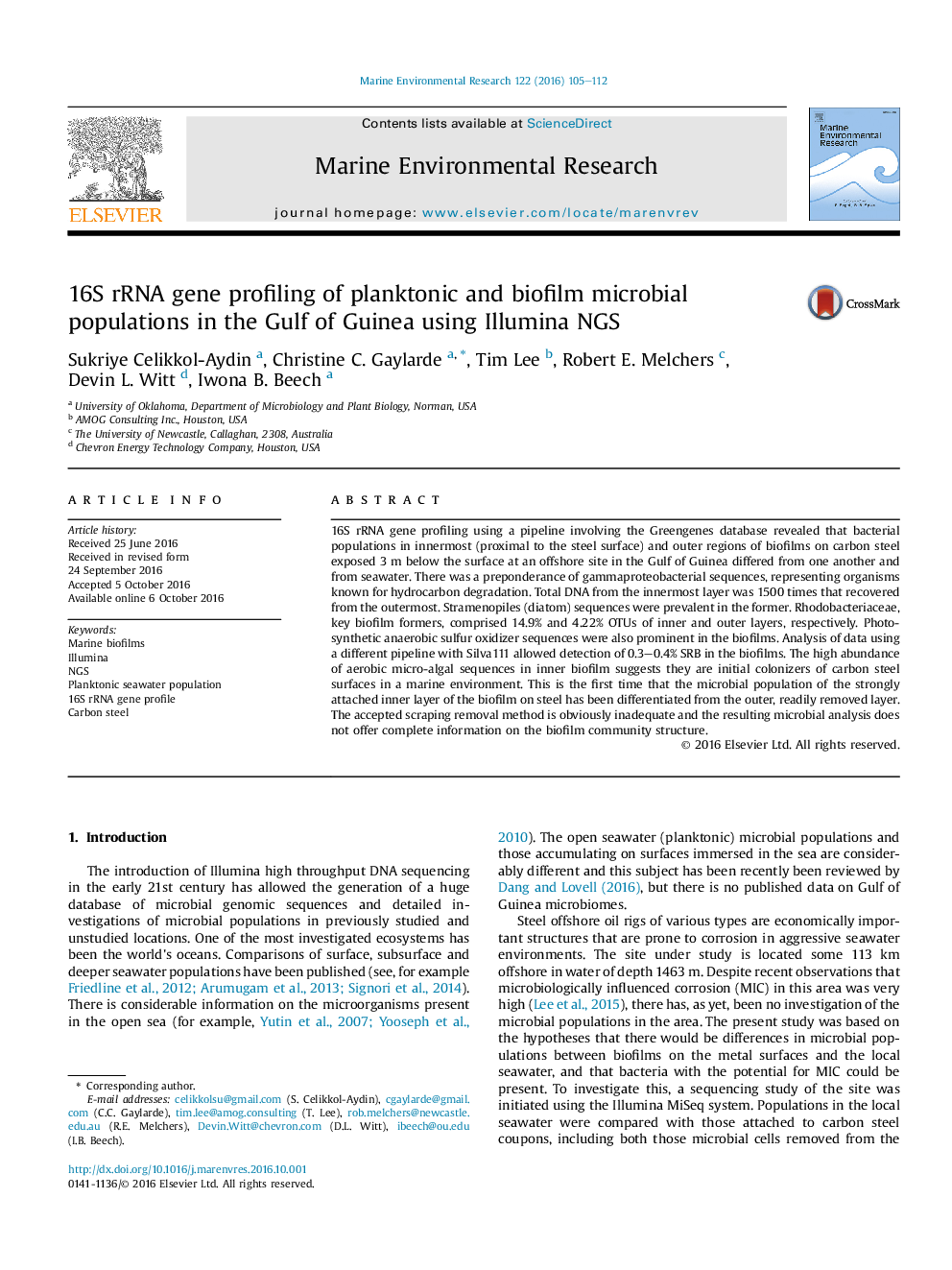| کد مقاله | کد نشریه | سال انتشار | مقاله انگلیسی | نسخه تمام متن |
|---|---|---|---|---|
| 5766317 | 1627561 | 2016 | 8 صفحه PDF | دانلود رایگان |

- 16S rDNA analysis showed populations on immersed steel differed from those in seawater.
- DNA from closely attached biofilm was 1500 times that from readily removed layers.
- Diatoma and Rhodobacteriaceae were more abundant in inner biofilm.
- Pipeline used in taxonomic analysis affected determined population.
- Pipeline using Silva111 database detected Deferribacteres and SRB OTUs in biofilms.
16S rRNA gene profiling using a pipeline involving the Greengenes database revealed that bacterial populations in innermost (proximal to the steel surface) and outer regions of biofilms on carbon steel exposed 3Â m below the surface at an offshore site in the Gulf of Guinea differed from one another and from seawater. There was a preponderance of gammaproteobacterial sequences, representing organisms known for hydrocarbon degradation. Total DNA from the innermost layer was 1500 times that recovered from the outermost. Stramenopiles (diatom) sequences were prevalent in the former. Rhodobacteriaceae, key biofilm formers, comprised 14.9% and 4.22% OTUs of inner and outer layers, respectively. Photosynthetic anaerobic sulfur oxidizer sequences were also prominent in the biofilms. Analysis of data using a different pipeline with Silva111 allowed detection of 0.3-0.4% SRB in the biofilms. The high abundance of aerobic micro-algal sequences in inner biofilm suggests they are initial colonizers of carbon steel surfaces in a marine environment. This is the first time that the microbial population of the strongly attached inner layer of the biofilm on steel has been differentiated from the outer, readily removed layer. The accepted scraping removal method is obviously inadequate and the resulting microbial analysis does not offer complete information on the biofilm community structure.
Journal: Marine Environmental Research - Volume 122, December 2016, Pages 105-112